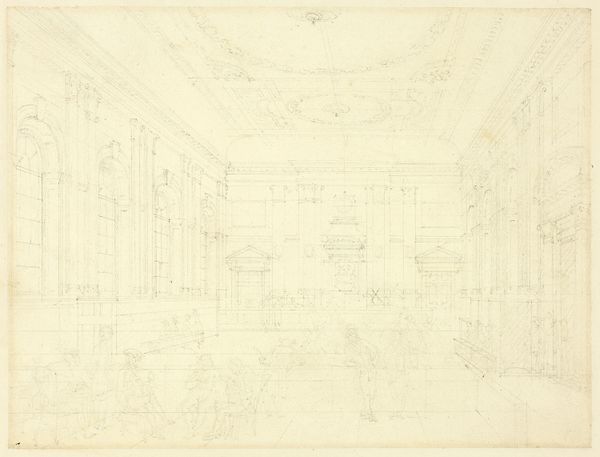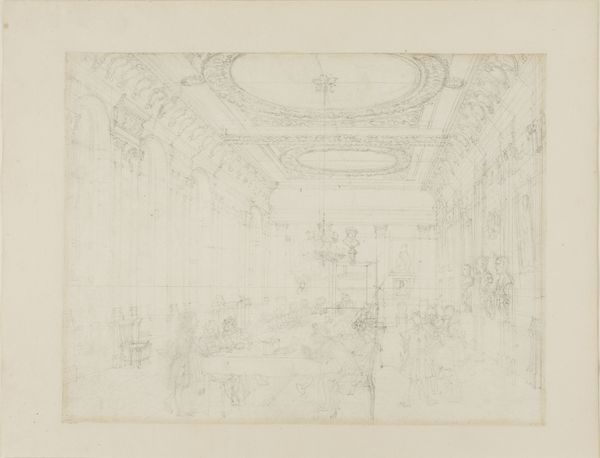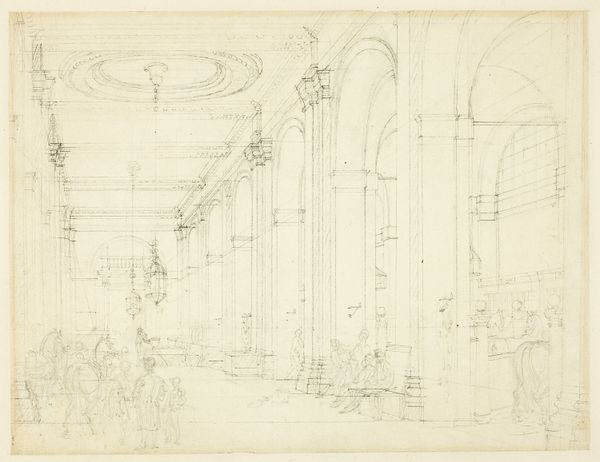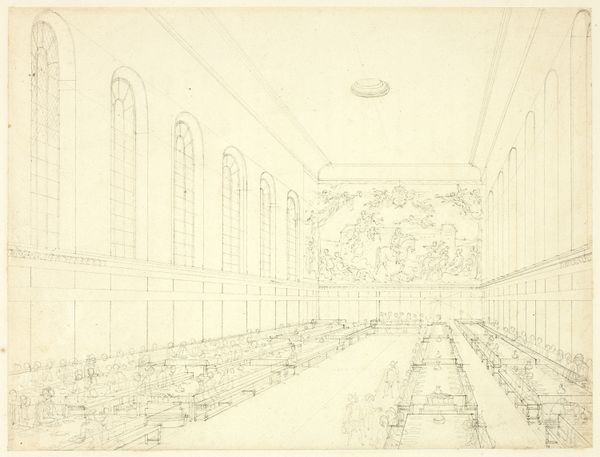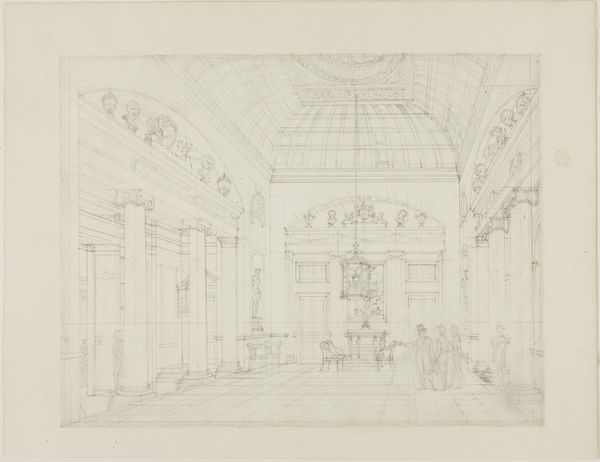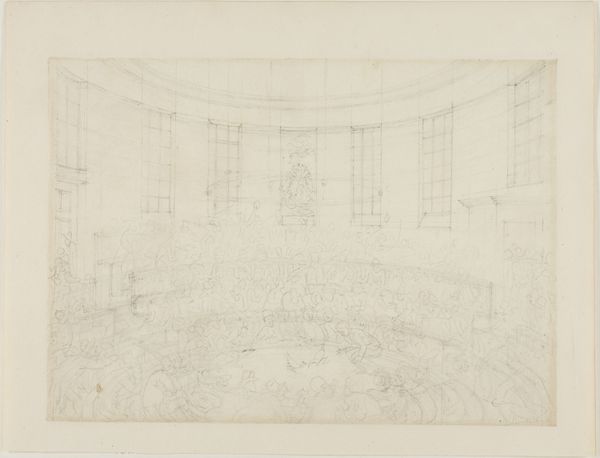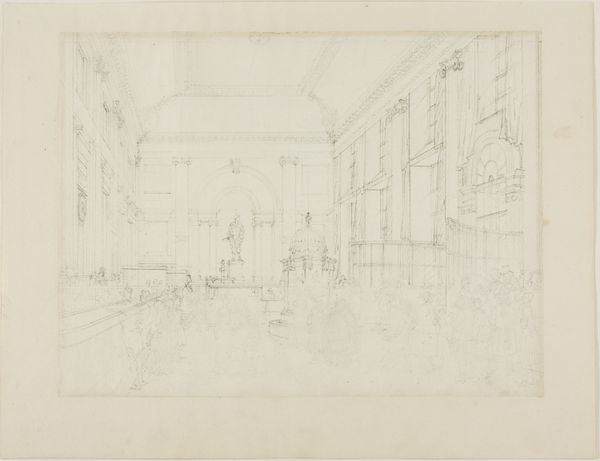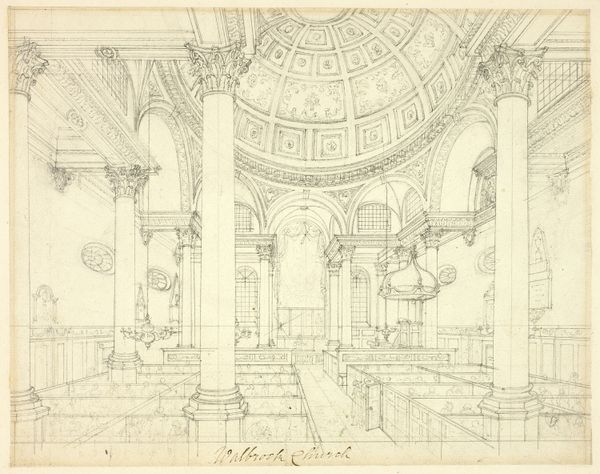
Study for Surrey Institution, from Microcosm of London c. 1809
0:00
0:00
drawing, print, etching, paper, graphite, architecture
#
drawing
#
neoclacissism
# print
#
etching
#
etching
#
perspective
#
paper
#
form
#
line
#
graphite
#
cityscape
#
architecture
Dimensions: 196 × 260 mm
Copyright: Public Domain
Editor: Here we have Augustus Charles Pugin's "Study for Surrey Institution, from Microcosm of London," dating from around 1809. It's a graphite and etching piece, quite detailed for its size. It strikes me how the artist meticulously rendered the interior architecture. What stands out to you when you look at this? Curator: It’s a fascinating glimpse into the labor of representation, isn’t it? Consider the graphite— a readily available material, almost industrial in its commonality—used here to depict the aspirations of Neoclassical London. How does the process of etching, this repeatable method, democratize or perhaps commodify the architectural ambition? Editor: That's interesting – framing it as a sort of architectural commodity. I hadn’t thought of it that way. So the choice of etching enables mass production and broader access to the image of this institution? Curator: Exactly. And beyond mere reproduction, let's consider the social context. The Surrey Institution aimed to provide education and promote the arts and sciences. Who had access to this institution, both physically and through images like this? Were the laboring classes invited to learn, or merely to observe from a distance? Editor: So you’re saying the print becomes a kind of…advertisement? Promoting inclusion, perhaps falsely, depending on who it really served? Curator: Precisely. The materials themselves—the graphite, the etching process, the paper—and their dissemination become tools for reinforcing societal hierarchies, despite the Institution's stated goals. The piece invites us to question whose narrative is truly being represented, and at what cost. Editor: That connection of material to the building's purpose is eye-opening! I’ll never see an etching the same way again. Curator: Art like this reminds us to always examine the materials, the making, and the market forces shaping what we see, and who benefits from it all.
Comments
No comments
Be the first to comment and join the conversation on the ultimate creative platform.

